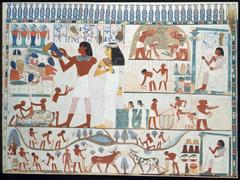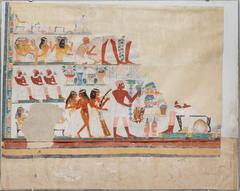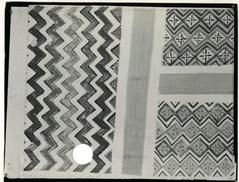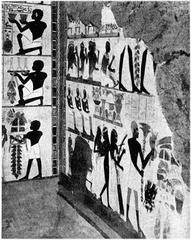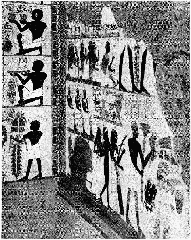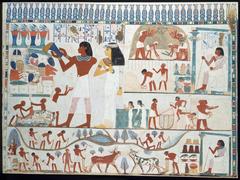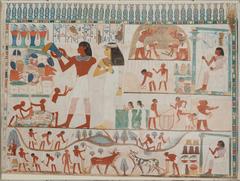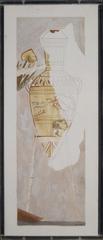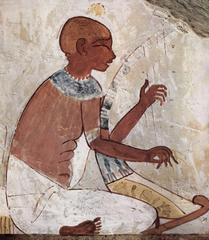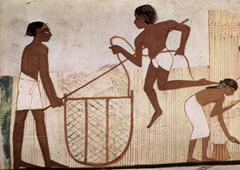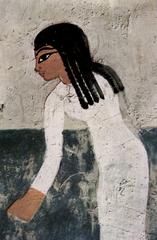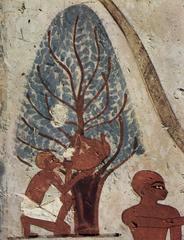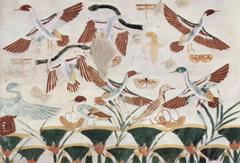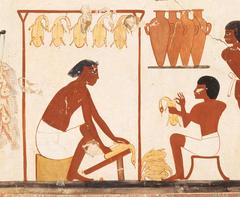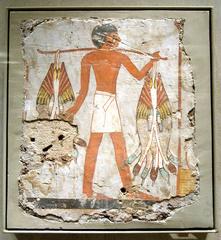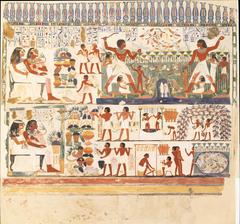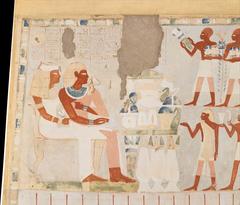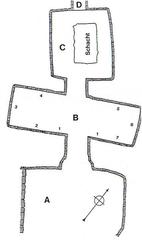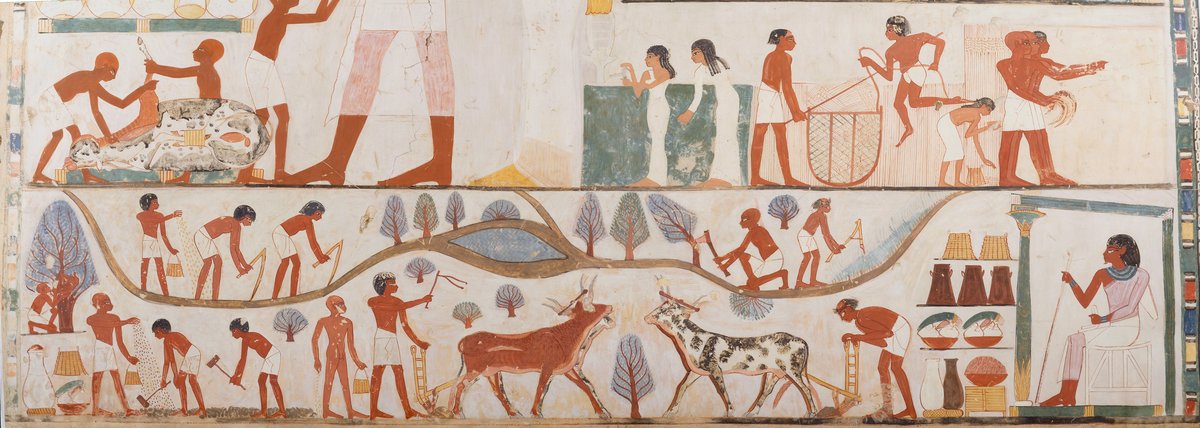
TT52 Tomb of Nakht: Visiting Hours, Tickets, and Comprehensive Guide to Luxor’s Historical Sites
Date: 14/06/2025
Introduction
The Tomb of Nakht (TT52), located in the Theban Necropolis on Luxor’s West Bank, is a vivid testament to the artistry and sophistication of ancient Egypt’s 18th Dynasty. Belonging to Nakht, a scribe and astronomer of Amun under Pharaoh Thutmose IV (circa 1400 BCE), TT52’s exquisite wall paintings and rare astronomical ceiling offer unparalleled insight into New Kingdom society. This guide presents detailed information on TT52’s historical significance, visiting hours, ticketing, accessibility, preservation, and travel tips—equipping you for a rewarding visit to one of Luxor’s most captivating sites. For further research and current updates, authoritative resources such as Earth Trekkers, ETL Travel, and Hurghada Lovers are invaluable.
Table of Contents
- Origins and Discovery of TT52
- Nakht: Biography and Social Role
- Architectural Features and Artistic Highlights
- Religious and Cultural Context
- Historical Significance in the 18th Dynasty
- Planning Your Visit
- Nearby Attractions
- Conservation and Visitor Etiquette
- Frequently Asked Questions (FAQ)
- Summary and Practical Tips
- References & Further Reading
Origins and Discovery of TT52
TT52 is set in the Sheikh Abd el-Qurna sector of the Theban Necropolis, a prestigious burial ground for the New Kingdom’s elite (Earth Trekkers). First documented by 19th-century Egyptologists and more thoroughly recorded by Norman and Nina Davies in 1917, the tomb has been a focus of archaeological and art historical research. Its exceptional wall paintings and inscriptions are among the most informative records of non-royal life in ancient Egypt, illustrating the intersection of administrative, religious, and family life (The Brain Chamber).
Nakht: Biography and Social Role
Nakht held the prestigious titles “Scribe of the Granary of Amun” and “Astronomer of Amun,” pivotal positions within the temple economy and religious calendar at Karnak (Factinate). His wife, Tawy, is prominently depicted as a musician and singer for Amun, reflecting both her elite status and the importance of music in temple rituals (ETL Travel). The tomb’s decoration underscores Nakht’s connections to the priesthood and royal administration, as well as the significance of family in funerary commemoration.
Architectural Features and Artistic Highlights
TT52 follows the T-shaped floor plan typical of 18th Dynasty non-royal tombs: a transverse hall leads to an axial chapel, ending with a burial shaft. Crafted directly into limestone and finished with gypsum-based plaster, the tomb’s interior is adorned with vivid mineral pigments that have survived millennia (We Seek Travel).
Artistic Program:
- Banquet Scenes: Depict Nakht and Tawy attended by musicians and dancers at elaborate feasts, symbolizing hoped-for pleasures in the afterlife.
- Agricultural Scenes: Illustrate harvesting, grape pressing, and bird catching, reflecting the wish for abundance and eternal sustenance.
- Astronomical Ceiling: Features constellations and the goddess Nut—rare among non-royal tombs and highlighting Nakht’s profession.
- Musicians Fresco: “The Three Musicians” is especially renowned, showcasing the sophistication of New Kingdom music and the role of professional female musicians (Roaming Jewel).
- Animal Imagery: Includes a charming depiction of a family cat, rare in ancient Egyptian tomb art.
Religious and Cultural Context
The decoration of TT52 reflects core themes of Egyptian religion:
- Offerings to Deities: Scenes of Nakht and Tawy making offerings to Osiris, Anubis, and Amun for favor in the afterlife.
- Funerary Rituals: Purification rites, offering bearers, and the presence of a “false door” for the soul to receive offerings and communicate with the living.
- Symbolic Imagery: Depictions of fishing, hunting, and agricultural abundance symbolize regeneration and continuity after death (Historical Eve).
Historical Significance in the 18th Dynasty
The 18th Dynasty marked Egypt’s zenith in power and culture. TT52’s elaborate program demonstrates how high officials mirrored royal funerary practices to assert their status. The tomb provides vital data on the operations of the Amun priesthood, astronomical practices, and the daily life of Theban society (Earth Trekkers).
Planning Your Visit: Hours, Tickets, and Access
Visiting Hours
TT52 is generally open daily from 8:00 am to 4:00 pm (some sources report 6:00 am to 4:00 pm; verify locally for updates) (Hurghada Lovers).
Tickets
- Entry is included in the general Tombs of the Nobles ticket, covering several tombs in Sheikh Abd el-Qurna.
- As of 2025, the combined TT52/TT69 ticket costs approximately 120 EGP for foreign visitors (ETL Travel), but prices fluctuate—check with the Ministry of Tourism and Antiquities.
- Tickets are purchased at the West Bank ticket office; online purchases may be available.
Access and Facilities
- Location: Sheikh Abd el-Qurna, easily reached by taxi, car, or as part of a guided tour. Frequent boat crossings are available from the East Bank (We Seek Travel).
- Facilities: Basic amenities (restrooms, shaded waiting areas) are near the ticket office but not at the tomb itself. Bring water, sun protection, and wear sturdy shoes.
Accessibility
- Narrow, uneven passageways and steps to the entrance can be difficult for those with limited mobility. There are no ramps or elevators.
Guided Tours
A licensed Egyptologist guide is highly recommended for detailed interpretation of TT52’s iconography and context. Many tours combine TT52 with other Tombs of the Nobles or local monuments (We Seek Travel).
Nearby Attractions
Enhance your visit by exploring:
- Tombs of Menna (TT69) and Ramose (TT55): Nearby, with equally rich wall art.
- Valley of the Kings and Valley of the Queens: Famous royal burial grounds.
- The Ramesseum: Mortuary temple of Ramses II.
- Deir el-Medina: Village of the tomb builders.
- Local West Bank villages: Experience traditional crafts and daily life (We Seek Travel).
Conservation and Visitor Etiquette
To preserve TT52:
- Photography: Strictly prohibited inside without a special permit. Check current rules at the ticket office (Hurghada Lovers).
- Touching/Leaning: Forbidden; glass panels protect many wall paintings.
- Visitor Limits: Group sizes are controlled; visits typically last 15–30 minutes.
- Noise: Speak quietly to maintain the tranquil environment (Egypt Sites).
Ongoing conservation utilizes advanced techniques like 3D scanning and digital imaging to ensure the tomb’s longevity (We Seek Travel).
Frequently Asked Questions (FAQ)
What are the Tomb of Nakht’s visiting hours?
Open daily, typically 8:00 am to 4:00 pm. Confirm on arrival.
How do I buy tickets?
Purchase at the West Bank ticket office; combined tickets for TT52 and TT69 are available.
Is photography allowed?
No, unless you have a special permit. Flash and touching walls are always forbidden.
Is TT52 suitable for children or those with mobility issues?
Children are welcome with supervision. The tomb is not wheelchair-accessible due to narrow, uneven passages.
How long does a visit take?
Typically 15–30 minutes, due to space and conservation measures.
Summary and Practical Tips
The Tomb of Nakht (TT52) offers a profound window into ancient Egyptian life, bridging the worlds of ritual, art, and everyday existence. To maximize your visit:
- Arrive early to avoid crowds and heat.
- Bring cash for tickets and tips (credit cards are rarely accepted).
- Wear modest, comfortable clothing and sturdy shoes.
- Respect all conservation rules to help safeguard this unique site.
- Combine TT52 with nearby tombs and monuments for broader context.
For the latest on ticketing, opening times, and preservation, consult Ministry of Tourism and Antiquities, We Seek Travel, and the Audiala app.
Visuals



Internal Links
- Guide to the Tombs of the Nobles in Luxor
- Visiting the Ramesseum: Tips and Tickets
- Luxor Travel Guide
References and Further Reading
- Best Tombs to Visit in the Valley of the Kings, Earth Trekkers
- Visiting the Tomb of Nakht in Luxor: The Brain Chamber
- Tomb of Nakht (TT52) Guide: Hurghada Lovers
- Nakht Tomb Egypt: ETL Travel
- Tomb of Nakht (TT52): Egypt Sites
- Three Musicians Scene: Roaming Jewel
- How to Visit Valley of the Kings: Earth Trekkers
- Things to Do in Luxor: We Seek Travel
- Ministry of Tourism and Antiquities, Egypt
- Valley of the Nobles: Tours from Hurghada
- Tomb of Nakht Scenes of Music and Dance: Historical Eve

